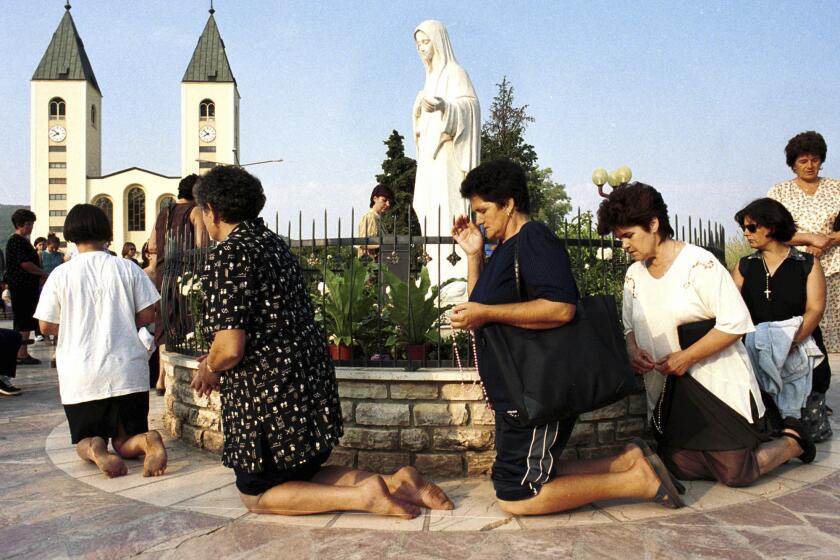Germany’s Justice System
The question raised in your editorial of Dec. 8 “German Justice: How Balanced?” suggests deliberate judicial laxness in Germany with regard to right-wing violence. This merits clarification.
First, a few facts: In 1992 alone, the year of the worst xenophobic violence in Germany in which eight foreigners were killed, 1,500 assailants, mostly disgruntled youths, were sentenced for hate crimes in German courts. The first murder trial against two skinheads in May, 1993, ended in one defendant receiving a life sentence--the most severe punishment under German law--and the other receiving nine years imprisonment.
On Dec. 8, the assailants of a murderous arson attack on a Turkish family home were handed a life sentence and 10 years behind bars, the maximum juvenile sentence. Such penalties, combined with the banning of five right-wing groups, the tightening of law enforcement and a number of other measures against hate crimes, have resulted in a significant decrease of these kinds of criminal activities--a decrease of 28% compared with 1992 to be exact.
Although it may appear at times that German courts have meted out lenient sentences against criminals, this is not to be interpreted as a sign of laxness toward right-wing violence: It is precisely the bitter experience of repressive “justice” in the Hitler years that has shifted the emphasis of our judicial system from incarceration to rehabilitation, particularly in the case of young delinquents. And--in striking contrast to the much more sophisticated German left-wing terrorists--they make up the bulk of right-wing offenders: More than two-thirds of them are between 14 and 20 years of age. To use the generic term “neo-Nazi” is too simplistic and misleading: Social alienation, gang-related violence, boredom, drugs and alcohol are in many cases determining factors.
The opinion mentioned in your editorial that Germany’s judiciary is “an instrument of the state” is as ridiculous as it is unfounded. The separation of the three branches of government with an independent judiciary is a basic concept of a democracy enshrined in the German constitution, just as it is in the American. Who, indeed, would pressure the German courts to be lenient towards right-wing extremism? The German government? Hardly. In most cases prosecutors demand stiffer sentences than the ones eventually handed out by the judges. The German public? That would be surprising. Three million citizens (not “tens of thousands” as you write) turned out to protest right-wing extremism.
One wonders: Is the imbalance in the German judiciary or rather in some press reporting from Germany?
CORNEL METTERNICH
Consul General of Germany
Los Angeles
Your editorial, critical of the German justice system, ignores one important difference between their system and ours: The young German racist who critically injured a Lebanese child will not be released from prison until he has served every day of his five-year sentence behind bars.
The young American racist who critically injured a white truck driver received a harsher sentence than his German counterpart, but will likely be free in four years.
Sitting in our glass courthouse, we should be careful not to throw stones.
MARIA PRUTSCH
San Marino
More to Read
Start your day right
Sign up for Essential California for news, features and recommendations from the L.A. Times and beyond in your inbox six days a week.
You may occasionally receive promotional content from the Los Angeles Times.






